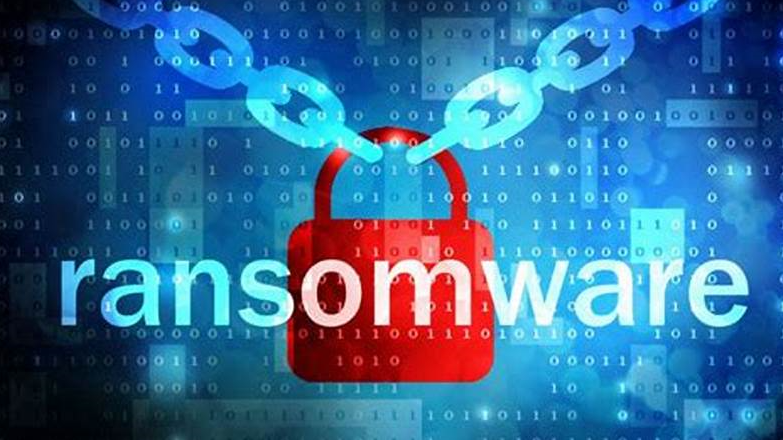Imagine losing access to your critical files and data, only to receive a demand for payment from an unknown attacker. This is the reality of ransomware attacks: a growing threat to individuals and businesses worldwide. Whether you are a small business owner, a student, or simply someone who uses the internet, ransomware can strike and cause significant harm. In this blog post, we’ll explore what ransomware is, how it works, the different types of attacks, and most importantly, how to protect yourself from becoming a victim.
What Is Ransomware and How Does It Work?
Ransomware is a type of malicious software (malware) that blocks access to your computer files, systems, or even entire devices until you pay a ransom to the attacker. It is like someone locking you out of your house and refusing to give you the key unless you hand over money. These attackers often target critical data: personal photos, business documents, or sensitive information, knowing that people will be more likely to pay to regain access.
This is how it works:
- The attacker sends you an email with a link or attachment, which might look harmless or even important.
- Once you click on the link or download the attachment, the ransomware is activated on your device.
- The software encrypts (locks) your files, making them inaccessible to you.
- A message then appears on your screen, demanding a ransom, usually in cryptocurrency like Bitcoin, in exchange for unlocking your files.
- The worst part? Paying the ransom doesn’t always guarantee you’ll get your files back. Even if you comply, the attacker might not follow through, leaving you with no money and no data.
Types of Ransomware Attacks and Their Impact
There are several types of ransomware, and they can vary in seriousness. Understanding the differences can help you recognise potential threats and know what to expect.
- Crypto Ransomware: This is the most common type of ransomware and it works by encrypting (locking) your files, making them impossible to open without the decryption key, which the attacker holds. Businesses are often targeted by this type of ransomware because losing access to some critical files can halt operations or bring about severe loss.
- Locker Ransomware: Instead of locking your files, locker ransomware locks you out of your entire device. You can’t use your computer, phone, or system at all until the ransom is paid. While your files might not be directly at risk, the inability to access your device can cause just as much damage.
- Scareware: Scareware tricks you into believing your computer is infected with a virus or has serious security issues, and it demands payment to fix the “problem.” In reality, there’s no real threat, but the scare tactics convince people to pay for unnecessary solutions.
- Doxware: Also known as extortionware, doxware threatens to release sensitive personal information unless the ransom is paid. This type of attack plays on the fear of embarrassment or the loss of privacy, pushing victims to comply with the attacker’s demands.
The impact of these attacks can be devastating. For individuals, losing family photos, school projects, or financial records can feel overwhelming. For businesses, ransomware can lead to operational shutdowns, loss of customer trust, and significant financial loss.
How to Identify Signs of a Ransomware Attack
Ransomware attacks often happen quietly at first, but there are warning signs to watch out for:
- Unusual Slowdowns: If your computer suddenly starts running much slower than usual, it could be a sign that ransomware is working in the background to encrypt your files.
- Strange File Extensions: When ransomware encrypts files, it often changes their extension (the part after the file name, like .doc or .jpg). If you notice your files have unusual extensions that you don’t recognize, this is a red flag.
- Pop-Up Messages: Once the ransomware has done its job, you will likely see a message demanding a ransom in exchange for your files. This message usually includes payment instructions, and the tone may be urgent or threatening.
- Restricted Access to Files or Devices: If you suddenly can’t access your files or your entire computer is locked, ransomware may be to blame. You will likely be prompted to pay a ransom to restore access.
Protecting Against Ransomware Attacks
Fortunately, there are steps you can take to reduce your risk of falling victim to ransomware. Prevention is key, and with a few preventive measures, you can improve your cybersecurity significantly.
- Keep Your Software Up to Date: Outdated software can have security weaknesses that attackers exploit. Regularly update your operating system, antivirus software, and apps to ensure you are protected from the latest threats.
- Back Up Your Data Regularly: Make it a habit to back up your important files, either on an external hard drive or through cloud storage. This way, if ransomware strikes, you can restore your files without paying the ransom.
- Be Cautious with Emails: Many ransomware attacks start with phishing emails. Avoid clicking on suspicious links or downloading attachments from unknown or unexpected sources. If an email looks strange, even if it appears to be from someone you know, double-check before clicking.
- Use Strong, Unique Passwords: Weak passwords make it easier for attackers to gain access to your system. Use strong, unique passwords for all your accounts, and consider using a password manager to keep track of them.
- Enable Two-Factor Authentication (2FA): Two-factor authentication adds an extra layer of security by requiring you to confirm your identity with something you know (like a password) and something you have (like a text message code). Even if an attacker gets your password, they won’t be able to access your account without the second factor.
- Install Antivirus and Anti-Ransomware Software: Reliable antivirus software can detect and block ransomware before it does any damage. Many security programs also offer anti-ransomware tools specifically designed to protect against this type of attack.
- Educate Yourself and Your Employees: If you run a business, ensure your employees know how to spot potential ransomware attacks. Cybersecurity training can go a long way in preventing these attacks from happening in the first place.
Ransomware attacks can be terrifying, but by understanding how they work and taking steps to protect yourself, you can reduce your risk of becoming a victim. Whether you’re an individual or a business owner, practising good cybersecurity habits like backing up your data, keeping your software up to date, and being cautious with emails, can make a big difference.
Remember, ransomware attackers rely on fear and urgency to force their victims into paying. By staying informed and prepared, you can resist these tactics and safeguard your digital life.



